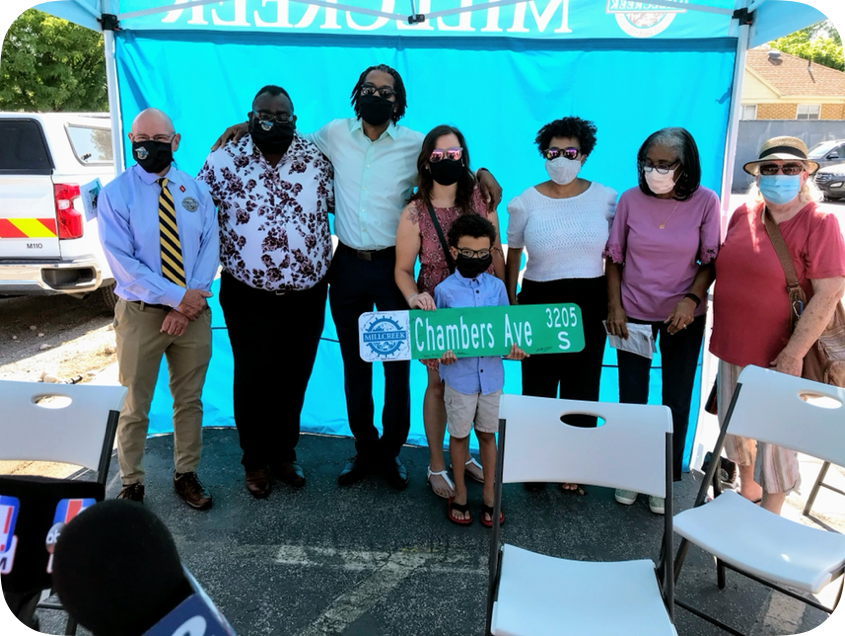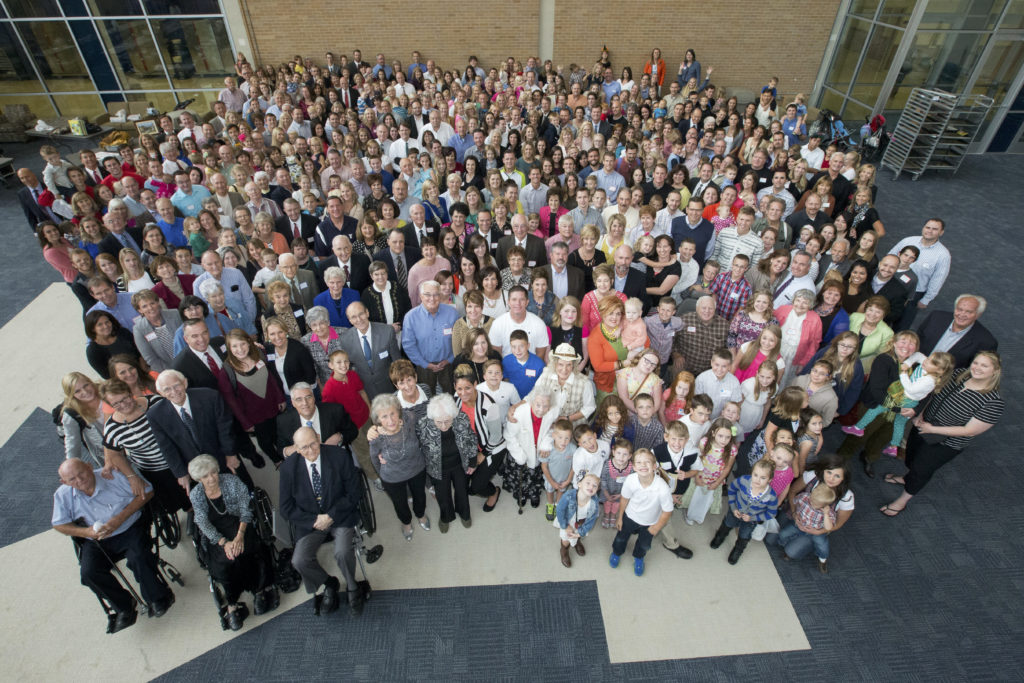
A petition to un-name BYU buildings has gained state media attention as a subset of a nationwide movement to remove monuments of proponents of slavery and racial discrimination. For many descendants of these buildings’ namesakes, the movement is personal.
These descendants, and descendants of enslaved people who lived in Utah, are sharing their stance on recent calls for change.
Some of the people for whom campus buildings were named — though usually prominent figures at the university, in the state of Utah or within The Church of Jesus Christ of Latter-day Saints — held various pro-segregationist views, the Salt Lake Tribune reports.
Among them are J. Reuben Clark, who argued for the segregation of blood from Black and white people at blood banks, though he later advocated for working toward the ordination of Black men to the priesthood; Ezra Taft Benson, who in 1967 said the Civil Rights movement was a Communist plot; and Abraham Smoot, who owned at least one slave.
The petition to un-name buildings on campus asks BYU “to retroactively apply their current policy to not name any new buildings after individuals to all existing campus buildings” so that all Black students will feel safe and welcome on campus.
Building Namesakes
Alan Smoot, a third-great grandson of Abraham Smoot and vice president of the Abraham O. Smoot Family Organization, said it is unfair to throw a blanket label on everyone who ever owned a slave and “erase them from the memories of history,” as not all slave owners were identical in their character or their treatment of slaves.
Renaming buildings or removing monuments should be considered on a case-by-case basis, Alan said, adding that there is a difference between a Confederate general who fought to protect the institution of slavery and a person who lived in the South and owned slaves but treated them kindly. Alan said he counts Abraham among the latter group.
“In my heart, I think (Tom) was probably treated more as a family member and as a fellow brother in the gospel,” Alan said. Tom was one of three slaves owned by Abraham Smoot. Tom joined the Church and was baptized into the Sugarhouse Ward, where Abraham was bishop.
Amy Tanner Thiriot, a historian of slavery in the Utah territory, said Tom died of “inflammation of the chest,” which is possibly pleurisy or tuberculosis, after at least seven years of service to the Smoot family. Alan hypothesized that Tom may have been very ill toward the end of his life, and that Abraham took him in and cared for him as “an act of compassion.”
Thiriot, however, said this was not an accurate portrayal of Tom’s conditions of service, and that Tom “had provided lots of hard, manual labor” for the Smoot family.

The Abraham O. Smoot Family Organization recently published a statement denouncing slavery and enumerating Abraham’s contributions to the early Latter-day Saint community in Utah, including his many years of political and Church service.
“Continually reaching out and serving the poor, the stranded and oppressed was his legacy,” the statement says.
The statement also details the immense financial sacrifice he made to save Brigham Young Academy, now BYU, which earned him the honor of having a campus building named for him, and Abraham’s dealings with his slaves. Not all of the information in the statement relating to Abraham’s slaves was true, the Salt Lake Tribune reported.
The statement reminds readers that a committee has been assembled to address racism on BYU campus and expresses confidence in the committee‘s ability to find meaningful solutions besides renaming buildings.
“An attempt to smear and cancel A. O. Smoot and Brigham Young and what they did 160 years ago accomplishes nothing,” the statement reads.
Vivian Despain, a relation of J. Reuben Clark, expressed a similar sentiment of respect for her relative.
“He was honorable, and if the Lord chose him for being an apostle and he was true to his calling, I will stand by him,” she said, adding that Elder Clark had at one point served as an ambassador to Mexico.
Relatives and descendants of Ezra Taft Benson declined to comment on the petition, though the Benson family did refer the Universe to a 1985 Ensign article on President Benson’s appointment to the position of Church president.
In the article, President Benson was quoted as having said, “My heart has been filled with an overwhelming love and compassion for all members of the Church and our Heavenly Father’s children everywhere. I love all our Father’s children of every color, creed, and political persuasion. My only desire is to serve as the Lord would have me do.”
Brigham Young
Another petition has surfaced in relation to discussions on improving racial equality at BYU — one to rename the university itself. One of the reasons included in the petition is the former Church president’s instigation of the priesthood ban for Black members of African descent. Brigham Young has also faced criticism for his pro-slavery rhetoric.
Lesa Young, a third-great-granddaughter of Brigham Young, said she feels no familial connection to her ancestor and would not feel sad to see his name removed from the university, as there were many other people in Church history who “were much more consistent in fighting for justice” than he was.
For Lesa, being a “product of (one’s) time” is not a sufficient excuse for racist words or actions, “because there are always people in those times who oppose injustice. There were abolitionists at that time, and there were people in the Church who were advocating for the equal rights of Black people at that time.”
Though Lesa said she would not feel bad to have Brigham’s name removed from the university, she also acknowledged that rebranding BYU would be a massive undertaking. She said she felt other types of reform would be a better use of the university’s time and effort.
“I would love to see more efforts to protect Black students on campus,” she said. “I would love to see BYU address its racism head-on — not just its history, but also the fact that so many current students have such an issue with that.”
Lesa also said she wished to see the Church take accountability for its role in perpetuating racist attitudes and ideas.

Nichol Bourdeaux also said she was in favor of improved accountability about the Church’s racial history. Bourdeaux is a descendant of Green Flake, an enslaved man who was at one point hired by Brigham Young. Bourdeaux is also a relative of other Black families and slaves who lived in early Utah, such as Samuel and Amanda Chambers, emancipated slaves who became successful farmers in Utah after the Civil War.
Bourdeaux said that as a Black woman and a descendant of Green Flake, education about her ancestors’ roles in settling Utah is more important to her than buildings’ names.
“Is it really about monuments and names? Not necessarily. To me, it’s about, what are we doing to recognize systematic racism at BYU?” she said. “What are we doing to change the history and actually write it in the way that we do talk about Smoot, and how he did own slaves, and what that meant to the continuation of systematic racism in BYU, in the LDS church?”
One major change Bourdeaux said she would like to see at BYU and across the state of Utah is a greater emphasis on Black history in education. She recalled arguing with her classmates in elementary school and trying to convince them that she, too, was a descendant of Utah pioneers.
“Where is that Black history in that school? I guarantee you they’re not learning about it. I guarantee you they don’t know the sacrifices of my family,” she said.
Though renaming buildings was not her highest priority, Bourdeaux said she understood why people want to end the practice of placing people who upheld slavery and systemic racism on a pedestal. Changing names of buildings and monuments alone, however, will not lead to the kind of lasting change necessary to eliminate racism in Utah, she said.
“Right now, my fear is that it’s trendy,” she said. “But how do we make sure that it continues in the classroom, it continues in the history books and it continues in whatever the Church chooses to reform — their beliefs and their history and how they teach?”
Bourdeaux said monuments and buildings are a product of culture; if BYU, the Church, and the state of Utah increase and improve Black history education, the cultural symbols such as statues and building names will follow.




